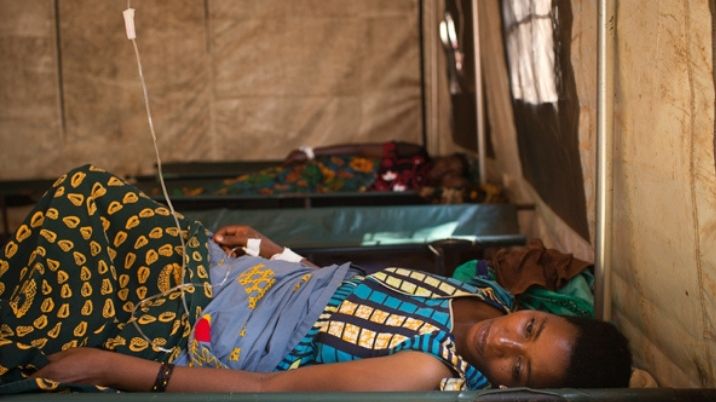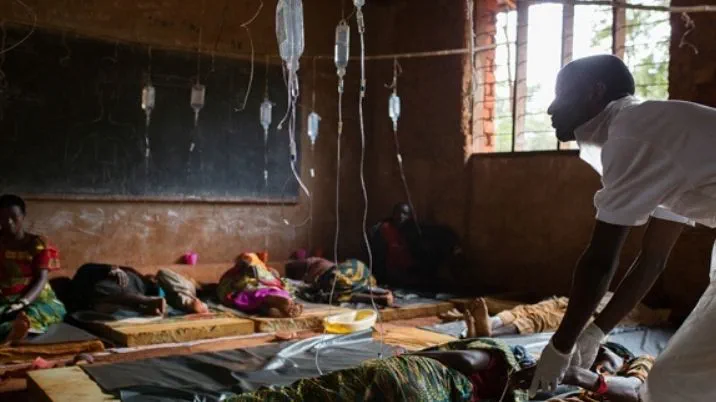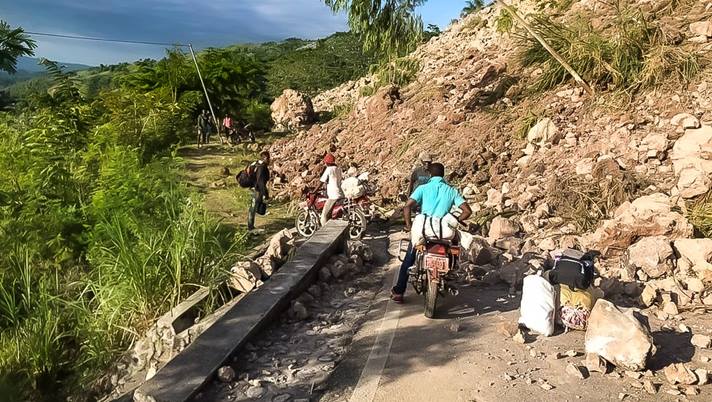Cholera: the deadly disease explained
Last updated 17 February 2023
Cholera is still a real health threat across the world, especially after disasters like the Turkey-Syria earthquake. British Red Cross health adviser Greg Rose explains the threat still posed by this potentially deadly disease.

A woman being treated at a cholera treatment centre.
What is cholera?
Cholera is a bacterial infection that's spread when people consume contaminated food or water – it is nearly always waterborne. The infection causes an acute diarrhoeal illness, which is usually mild but can develop into life-threatening symptoms.
Cholera is typically most prevalent in communities with poor infrastructure or during humanitarian emergencies, such as earthquakes, where there is a lack of clean water, poor hygiene and limited access to healthcare. It's most common in sub-Saharan Africa, Central America, the Caribbean, South Asia and parts of South-East Asia.
This waterborne disease is preventable and treatable. However, without treatment death can occur within hours.
How is cholera spread?
Typically, cholera is spread through the consumption of food or water contaminated with the bacteria, Vibrio cholerae. Usually, in an epidemic, it’s the faeces of an infected person that contaminates the food or water.
This means the disease can spread rapidly in areas without adequate water treatment, facilities or hygiene. Very rarely, cholera is spread directly from contact with an infected person.
Is there a cholera outbreak in Syria?
A cholera outbreak in Syria was officially declared on 10 September last year. It's thought that a lack of infrastructure, caused by 12 years of conflict, forced residents to drink contaminated water from the Euphrates river in north of the country.
The disease quickly spread through north-west Syria, where millions of displaced people were living in crowded camps with poor sanitation - the perfect storm for the disease to flourish.
Will cholera in Syria get worse after the Turkey-Syria earthquake?
Health officials and charities such as the Red Cross and Red Crescent Movement are worried that the cholera outbreak in Syria could get significantly worse.
A lack of food, clean water and sanitation put the country at risk from cholera, even before the earthquake. But with an estimated 5.3 million left homeless by the disaster and even less access to clean water than before, it's feared that the disease could spiral out of control.
The country's health minister also reported the earthquake had caused significant damage to the primary healthcare system in northern Syria.
Scores of health centres were destroyed and many medical staff were killed.

A man providing vital fluids at a cholera treatment centre.
What are the symptoms of cholera?
Cholera symptoms can range from mild to life-threatening. Most people have mild or no symptoms. Those who do develop symptoms will usually experience:
- severe, watery diarrhoea
- stomach and/or leg cramps
- vomiting
- intense thirst
- restlessness or irritability
However, the above are just mild symptoms of cholera. You also need to be aware of signs of dehydration, especially when someone is experiencing severe, watery diarrhoea, including:
- rapid heart rate
- low blood pressure
- loss of skin elasticity
- dry mucous membranes
Those who experience severe and possibly fatal cholera disease will often suffer from kidney failure. This can result in shock, coma and death within hours.
Cholera has a short incubation period, between two hours and five days, before symptoms begin. This, and the common water source and so often simultaneous infection, explain why you often see a sudden burst of cases.
It’s important to note that even if people do not display symptoms, the bacterium, Vibrio cholerae, stays in their faeces for up to two weeks. So if people are practising open defecation (associated with poor hand washing or water course contamination and transmission by flies), or if infrastructure is damaged after a natural disaster, then you can see how a cholera outbreak can occur.
Can cholera be treated?
Cholera is highly treatable. If cholera is detected early, then the patient may just need oral rehydration solution to prevent dehydration. If it’s more serious, then the patient may require fluid replacement at hospital. It’s not the bacterium that will kill a person.
A combination of acute diarrhoea and vomiting can lead to severe dehydration – a victim can lose several litres of fluid in a matter of hours. This is what proves fatal. While the treatment of cholera is relatively simple, the issue is that in places where cholera is prevalent, such as in Yemen and sub-Saharan Africa, health care is not always readily available.
This can result in a lot of unnecessary deaths from this treatable waterborne disease.
Does the Red Cross help treat cholera?
Teams from across the Red Cross and Red Crescent Movement treat people with cholera through mobile health clinics after a disaster, providing rehydration and saving lives. This has been the case in Syria, Yemen and most recently, Pakistan.
Red Cross and Red Crescent teams also focus on healthcare and prevention, providing access to clean water and hygiene products to stop cases spreading.
How do you prevent cholera?
The most effective cholera prevention solution in the aftermath of a disaster is to make sure people are aware of the dangers and have access to clean, chlorinated water, soap and toilets. The main causes of cholera are contaminated water or food, so maintaining personal hygiene and access to uncontaminated food and water is paramount.

Cholera often breaks out of disasters, such as the earthquake in Haiti.
Why is a cholera outbreak so common after a conflict or natural disaster?
In Yemen, conflict has destroyed essential infrastructure, and poor conditions mean that cholera has taken hold. The country suffered an unprecedented cholera outbreak in 2016, and it has become the largest and fastest-spreading epidemic since the World Health Organisation began recording outbreaks in 1949.
After the cholera outbreak peaked in 2017, a second wave of cases began in August 2018 and now continues to affect the lives of millions. Elsewhere, a cyclone devastated homes and facilities in Mozambique. Water and sanitation no long function in many cities. Conditions then become ripe for waterborne diseases like cholera.
Pakistan Floods Appeal
Over 500 staff at the Pakistan Red Crescent are providing essential support, with help from a roster of over 3,000 volunteers. Your gift will help teams to reach people in the most affected areas.
DONATE NOW